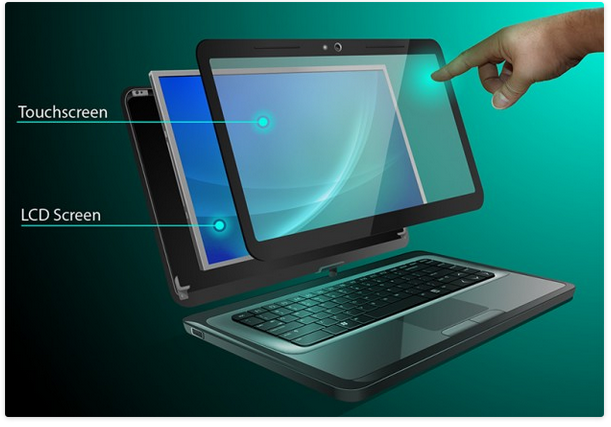
The reason is simple: these chemicals can react with the materials that the screen is made of or coated with. Using general household cleaning solutions is not recommended, as they may damage the LCD surface (we have seen the effects of Windex applied directly onto the LCD, and it was not pretty).įor cleaning the LCD, avoid cleaning products that contain ammonia (like Windex®) ethyl alcohol (Everclear®) alcohol for human consumption toluene (paint solvents) as well as acetone or ethyl acetate (these are often used in nail polish remover). Do NOT spray the solution directly onto the LCD – it can run down the LCD screen, and cause damage to electronic components behind the bezel instead, spray a little on the cloth, and then rub the screen gently. To clean the fingerprints and/or greasy smudges use a screen cleaning solution designed for LCD screens (a non-ammonia based cleaner). These non-ultrasoft materials are very likely to scratch the display.Īvoid using water to clean your LCD screen, or a digitizer unless the instructions for your machine say specifically otherwise. Some higher-end (especially business-line) laptops come with a specific cleaning cloth, which is great but any soft, dry, lint-free cloth will do – we found that the ones that are supplied with the eyeglasses work wonders.Īvoid using paper towels, toilet paper, tissue paper, or something like your shirt to wipe the screen. It may sound like an overkill, but any inaccurate movement may lead to significant damage and our approach with working on electronics has always been “better safe than sorry”. Before you clean the screen, it is best to turn it off completely, and remove the battery and any power sources.

LCD SCRUB WINDOWS TV
To find the best brand of TV for your room, check out the flat-screen TV buying guide.For general cleaning of the bezel, the touchscreen digitizer, and your LCD screen, you need nothing more than a clean cloth and a cleaning solution. Gently wipe the screen in a circular motionĪs you can see, the guidelines are similar, regardless of the TV brand.Don’t spray water directly on the screen.Avoid chemicals like alcohol, thinners and benzene.Dry any liquid on the screen as soon as possible.Use a small duster to clean between the TV and stand.For inks from oil markers, soak the cloth in a non-soap synthetic cleanser diluted by water.Gently wipe the screen with a dry, soft cloth.Don’t let the TV touch rubber or vinyl materials for long periods.Don’t spray anything directly on the screen.If you still have issues, spray distilled water on your microfiber cleaning cloth and gently wipe the screen.Clean the frame and screen with a microfiber cleaning cloth.However, here is a summary of some of the top TV brand’s screen cleaning tips. So, if you own a TV by Sony, Samsung, LG or TCL, you can use these methods to clean your TV screen. The tips for cleaning your TV screen in this article will work for any flat-screen TV brand. Or, you can create a more powerful solution with 1 part isopropyl alcohol and 4 parts distilled water. You can make your own TV screen cleaning solution for stubborn areas by mixing 1 part of distilled water with 1 part of white vinegar. However, you must avoid cleaning liquids with harmful chemicals such as alcohol, acetone, benzene and ammonia. The best liquid to use is distilled water, as even tap water can contain particles that could scratch your screen. If you want to buy a dedicated TV cleaning kit with a cloth and cleaning solution, you can – but you don’t need to. Once the area is clean, gently wipe horizontally or vertically in overlapping lines to clear any smears or streaks. Gently rub the dirty area using a circular motion, which can be quicker as it cleans from multiple angles in one go. Whatever you do, don’t be tempted to spray any liquid directly on the screen.

Get another clean, dry microfiber cloth and spray the liquid as a fine mist onto the fabric. These problem areas may need the help of a liquid to successfully remove them – but only use liquid on these isolated areas rather than across the whole screen.

These might be sticky fingerprints or accumulations of dust that have stuck together. Check the screen and see if there are any stubborn problem areas.


 0 kommentar(er)
0 kommentar(er)
